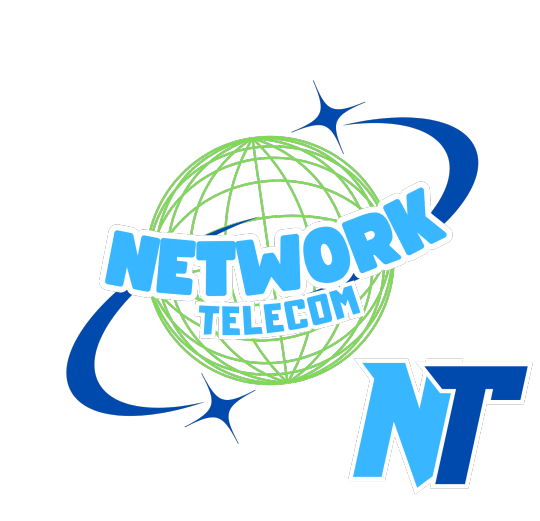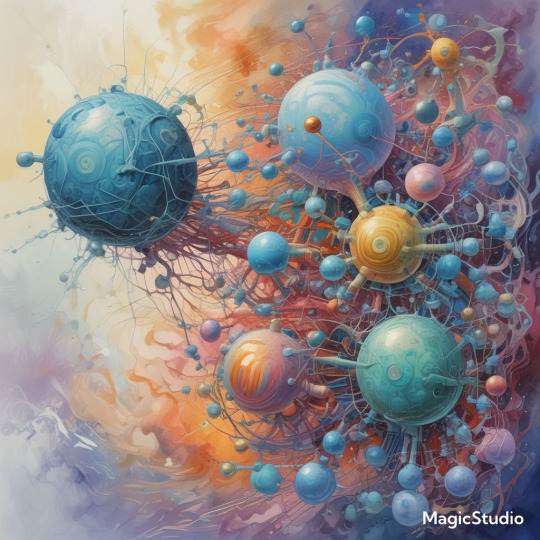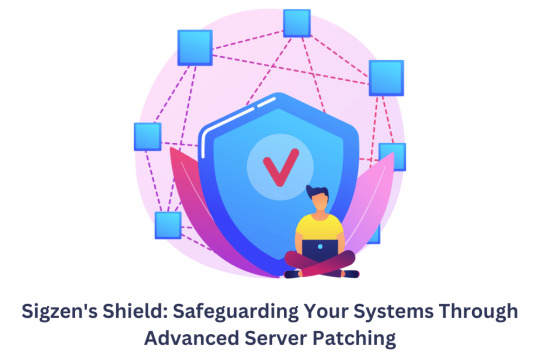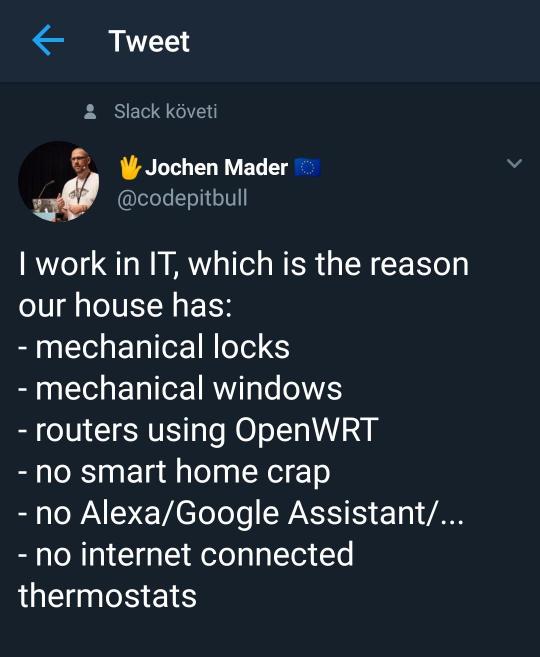#Information Technology Networking
Explore tagged Tumblr posts
Text


4.21.25
Today went a little bit better than it has been lately. I managed to lock in over the weekend and finish quite a bit of problem sets for discrete math. Final exam this week 🤌
#studyblr#stemblr#study aesthetic#information technology#women in stem#100 days of productivity#network engineering
235 notes
·
View notes
Text

This is so goddamn real, I once saw an unnamed company DDoS itself multiple times in one week because they didn't take into account how their network would be affected by forcing OS patches across the entire fleet through their VPN if they happened all at the exact same time.
And the person who knew how to script the staggering so that wouldn't happen had been laid off because they cost too much less than a year prior.
#it bullshit#ip networking#certificates#att outage#it corporate life#information technology#att network outage#it layoffs#it's so goddamn real#it conspiracy theories
82 notes
·
View notes
Text
I SWEAR TO GOD IM GONNA KILL THE DUMBASS WHO DECIDED TO DO NETWORK MAINTENANCE AT 5PM ON FRIDAY THE 13th
2 notes
·
View notes
Text

www.netrworkteleco.com
#network#telecom#ai generated#technology#tech#electronics#information technology#software#futurism#ai#news#world news#breaking news#trending
2 notes
·
View notes
Text
Engineers Achieve Multiplexing Entanglement In Quantum Network
— By California Institute of Technology | February 26th, 2025

Schematic of a Quantum Network Link Based on Multiple 171Yb Qubits in Nanophotonic Cavities. Credit: Nature (2025).
Laying the groundwork for quantum communication systems of the future, engineers at Caltech have demonstrated the successful operation of a quantum network of two nodes, each containing multiple quantum bits, or qubits—the fundamental information-storing building blocks of quantum computers.
To achieve this, the researchers developed a new protocol for distributing quantum information in a parallel manner, effectively creating multiple channels for sending data, or multiplexing. The work was accomplished by embedding ytterbium atoms inside crystals and coupling them to optical cavities—nanoscale structures that capture and guide light. This platform has unique properties that make it ideal for using multiple qubits to transmit quantum information-carrying photons in parallel.
"This is the first-ever demonstration of entanglement multiplexing in a quantum network of individual spin qubits," says Andrei Faraon (BS '04), the William L. Valentine Professor of Applied Physics and Electrical Engineering at Caltech. "This method significantly boosts quantum communication rates between nodes, representing a major leap in the field."
The work is described in a paper published on February 26 in the journal Nature. The lead authors of the paper are Andrei Ruskuc (Ph.D. '24), now a postdoctoral fellow at Harvard University, and Chun-Ju Wu, a graduate student at Caltech, who completed the work in Faraon's lab.
Just as the internet connects with the classical computers we are accustomed to using today, the quantum networks of the future will connect quantum computers that exist in different physical locations.
When working with the quantum realm, researchers are dealing with the miniscule scale of individual atoms and of photons, the basic particles of light. At this scale, matter does not behave according to classical physics; instead, quantum mechanics are at play.
One of the most important and bizarre concepts in quantum mechanics is that of entanglement, where two or more objects such as atoms or photons are inextricably linked regardless of their physical separation. This connection is so fundamental, that one particle cannot be fully described without reference to the other. As a result, measuring the quantum state of one also provides information about the other, which is key to quantum communication.
In quantum communication, the goal is to use entangled atoms as qubits to share, or teleport, quantum information. The key challenge that has thus far limited communication rates is the time it takes to prepare qubits and to transmit photons.
"Entanglement multiplexing overcomes this bottleneck by using multiple qubits per processor, or node. By preparing qubits and transmitting photons simultaneously, the entanglement rate can be scaled proportionally to the number of qubits," says Ruskuc.
In the new system, the two nodes are nanofabricated structures made from crystals of yttrium orthovanadate (YVO4). Lasers are used to excite ytterbium atoms (Yb3+), a rare-earth metal, within these crystals, causing each atom to emit a photon that remains entangled with it. Photons from atoms in two separate nodes then travel to a central location where they are detected. That detection process triggers a quantum processing protocol that leads to the creation of entangled states between pairs of ytterbium atoms.
Each node has many ytterbium atoms within the YVO4 crystal, so there are plenty of available qubits. However, each of those atoms has a slightly different optical frequency caused by imperfections within the crystal.
"This is like a double-edged sword," Ruskuc says. On one hand, the differing frequencies allow the researchers to fine-tune their lasers to target specific atoms. On the other, scientists previously believed that the corresponding differences in photon frequencies would make it impossible to generate entangled qubit states.
"That's where our protocol comes in. It is an innovative way to generate entangled states of atoms even when their optical transitions are different," Ruskuc says.
In the new protocol, the atoms undergo a kind of tailored quantum processing in real time once the photons are detected at the central location. The researchers call this processing "quantum feed-forward control."
"Basically, our protocol takes this information that it received from the photon arrival time and applies a quantum circuit: a series of logic gates that are tailored to the two qubits. And after we've applied this circuit, we are left with an entangled state," Ruskuc explains.
The team's YVO4 platform can accommodate many qubits—in this work, each node contained approximately 20. "But it may be possible to increase that number by at least an order of magnitude," says co-author Wu.
"The unique properties of rare-earth ions combined with our demonstrated protocol pave the way for networks with hundreds of qubits per node," Faraon says. "We believe this work lays a robust foundation for high-performance quantum communication systems based on rare-earth ions."
Additional Caltech authors of the paper, "Multiplexed Entanglement of Multi-emitter Quantum Network Nodes," are graduate student Emanuel Green; AWS Quantum Postdoctoral Scholar Research Associate Sophie L. N. Hermans; graduate student William Pajak; and Joonhee Choi of Stanford University, a former postdoctoral scholar from Faraon's lab. Device nanofabrication was performed in the Kavli Nanoscience Institute at Caltech.
#California Institute of Technology#Physics#Quantum Physics#Engineers#Entanglement#Quantum Network#Journal Information
4 notes
·
View notes
Text

Deep Learning, Deconstructed: A Physics-Informed Perspective on AI’s Inner Workings
Dr. Yasaman Bahri’s seminar offers a profound glimpse into the complexities of deep learning, merging empirical successes with theoretical foundations. Dr. Bahri’s distinct background, weaving together statistical physics, machine learning, and condensed matter physics, uniquely positions her to dissect the intricacies of deep neural networks. Her journey from a physics-centric PhD at UC Berkeley, influenced by computer science seminars, exemplifies the burgeoning synergy between physics and machine learning, underscoring the value of interdisciplinary approaches in elucidating deep learning’s mysteries.
At the heart of Dr. Bahri’s research lies the intriguing equivalence between neural networks and Gaussian processes in the infinite width limit, facilitated by the Central Limit Theorem. This theorem, by implying that the distribution of outputs from a neural network will approach a Gaussian distribution as the width of the network increases, provides a probabilistic framework for understanding neural network behavior. The derivation of Gaussian processes from various neural network architectures not only yields state-of-the-art kernels but also sheds light on the dynamics of optimization, enabling more precise predictions of model performance.
The discussion on scaling laws is multifaceted, encompassing empirical observations, theoretical underpinnings, and the intricate dance between model size, computational resources, and the volume of training data. While model quality often improves monotonically with these factors, reaching a point of diminishing returns, understanding these dynamics is crucial for efficient model design. Interestingly, the strategic selection of data emerges as a critical factor in surpassing the limitations imposed by power-law scaling, though this approach also presents challenges, including the risk of introducing biases and the need for domain-specific strategies.
As the field of deep learning continues to evolve, Dr. Bahri’s work serves as a beacon, illuminating the path forward. The imperative for interdisciplinary collaboration, combining the rigor of physics with the adaptability of machine learning, cannot be overstated. Moreover, the pursuit of personalized scaling laws, tailored to the unique characteristics of each problem domain, promises to revolutionize model efficiency. As researchers and practitioners navigate this complex landscape, they are left to ponder: What unforeseen synergies await discovery at the intersection of physics and deep learning, and how might these transform the future of artificial intelligence?
Yasaman Bahri: A First-Principle Approach to Understanding Deep Learning (DDPS Webinar, Lawrence Livermore National Laboratory, November 2024)
youtube
Sunday, November 24, 2024
#deep learning#physics informed ai#machine learning research#interdisciplinary approaches#scaling laws#gaussian processes#neural networks#artificial intelligence#ai theory#computational science#data science#technology convergence#innovation in ai#webinar#ai assisted writing#machine art#Youtube
3 notes
·
View notes
Text
I do find it so funny that I will graduate college days away from my birthday. Like my birthday is literally in between the end of the semester ("graduation") and commencement
It really will be like a joint graduation & birthday party for me lmao
#speculation nation#i dont really do birthday parties anymore. havent in a long time. mostly just go out and do smth fun around my bday. ya kno#also have cake but like not in a party way. just like. here's cake lol#but im probably only gonna graduate from college once. which means i might as well live it up and all.#invite all sorts of extended family and people who have known me. etc etc.#actually it just kinda sunk in that i am. Computer and Information Technology (Systems Analysis and Design focus) w a minor in Communication#like those are words. it's a lot of words but actually it really is pretty accurate?? like that's indeed what ive been studying.#now how much i *remember* is another question. considering how long ive taken to get thru school lol#but that's what people will see on my degree. that's my Thing. graduated in Computer Systems and Talking.#idk it's just weird to have spent so much of my life on this and like That's the culmination. it took so much work.#even beyond a normal 4 years. i switched my major *twice*. switched my minor too.#first year engineering to undecided liberal arts (as a temp major trying to switch to computer science bc i couldnt stay in FYE)#but then computer science sucked so i switched to trying to get into computer & info tech. which is different. and better.#and ive been in it long enough now that ive kinda forgotten but it did take some fuckin work to switch into it.#like i had to take certain classes first & i couldnt take them during the semesters that in-major students would take them#and i had to have my gpa up to a certain level etc etc. so many hoops to jump thru. i think it took me at least a year. or more. idr#but i made it in and thats my major. thats my thing. computers and information systems and communication.#doesnt FEEL like im an almost-graduate. but then i think about all the things ive taken and learned.#and maybe i dont remember a lot of the more specific things from these classes. but i took core lessons away from each one.#wont be able to recite the theories but i can live them. and thats the point of an education i guess.#anyways im gonna have to start job searching before too long and eughhbb. need to get my license first tho probably.#which i will... i will.... i have so many things to deal with... my life will be So Different in a year...#it will require me to put in the work now. but i can do it. and then a year from now. i'll hopefully be in a better spot.#living somewhere else. graduated from college. with a license and a car. maybe even an IT job of some kind.#kind of scared of trying to find a Big Boy Job. aka a job that requires a degree and networking and all that shit.#rather than just showing up and being like Hi i can do this job. i am not a total drain of a person. hire me please 👍#hfkahfks so many things to think about. and through it all i am still dealing with DEADLINES...!!!!#but yeah this is why my writing has largely been put on hold. idk i have a lot of things im dealing with rn.
3 notes
·
View notes
Text
feeling like shit might break into cisco corporate headquarters and vomit all over the shag carpet
#ccna#netadmin#networking#network engineer#information technology#cisco#cisco ccna#cisco certified network associate
8 notes
·
View notes
Text
I hate computers so fucking much, why can't you just work like you're supposed to you stupid plastic fuck!!!! I didn't pay money just so that I'd have a problem box that needs constant fucking fixing because things randomly go wrong!!!! Seriously fuck this shit, I want to smash this piece of trash open with a large heavy rock!!!!
#computer#electronics#tech#laptop#destroy computers#destroy laptops#smash laptops#burn laptops#obliterate laptops#annihilate laptops#networking#network#it#information technology
1 note
·
View note
Text


Night studies are just the coziest 💤🌙
Almost done with the video part of studying for Network+. After this, it’s onto the vendor material.
79 notes
·
View notes
Text
Hello I can be your tech guide, if you need any assistance in the following fields please let me know.
Back-End Development
VoIP
UX/UI
PHP, HTML,CSS,jQuery
CMS
Networking and IT field
E-commerce Systems
cPanel/WHM
Troubleshooting issues
And more fields that I can explore based on your questions.
I will happily answer all questions 😊
#full stack development#php#wordpress#shopify#godaddy#namecheap#aws#dropshipping#html#css#jquery#information technology#networking#hosting#dns
2 notes
·
View notes
Text

#fesposting#opsec#internet#pro tip#pro tips#fyi#psa#important#alert#social networks#social media#class war#privacy#invasion of privacy#ausgov#politas#auspol#tasgov#taspol#australia#fuck neoliberals#neoliberal capitalism#anthony albanese#albanese government#infotech#it#i.t.#information technology#anti cop#anti police
12 notes
·
View notes
Text
Sigzen Technologies's Shield: Safeguarding Your Systems Through Advanced Server Patching
Sigzen Technologies’s Shield represents a paradigm shift in the landscape of cybersecurity defenses. Its multifaceted approach encompasses not just basic patching but a holistic, proactive strategy to fortify systems against evolving threats. This section aims to delve deeper into the core innovations that set Sigzen Technologies’s Shield apart in the domain of advanced server patching. Enhanced…

View On WordPress
#Advanced Server Patching#Data Security#Information Security#IT Infrastructure#IT Management#IT Security#Network Protection#Patch Management#Server Management#Server Security#Technology Solutions#Vulnerability Patching
2 notes
·
View notes
Text
There's been talk about shutting down GSM network (e.g. Sweden and Norway have decided to do so by 2025) and I'm not too happy about it because it means that a lot of feature phones will become unusable. There of course are some new feature phones using 4G but for example mine, which is form 2006, will stop working if G2 gets taken down. To be honest, it worries me if they decide to close GSM in my country too because I don't want to switch to another phone... I like these old ones better!
For more info on the situation of 2G networks, see this website
#technological development can go fuck itself#i'm serious#gsm#2G#mobile network#phones#mobile phones#feature phones#basic phones#telecommunications#information technology#technology
2 notes
·
View notes
Text
Exploring the Philosophical Landscape of Technology: Theories and Perspectives
The philosophy of technology is a rich and evolving field that explores the nature, impact, and ethical dimensions of technology. Here are some key theories and approaches within this field:
Technological Determinism: This theory suggests that technology shapes society and human behavior more than individuals or society shape technology. It proposes that technological developments have a predetermined, often inevitable, impact on social, cultural, and economic structures.
Social Construction of Technology (SCOT): SCOT theory argues that technologies are not inherently good or bad but are socially constructed. It focuses on the process by which technologies are developed, adopted, and adapted based on the values and interests of different social groups.
Postphenomenology: Drawing from phenomenology, this approach explores how technology mediates our interactions with the world. It examines the ways in which technology influences our perception, embodiment, and experiences.
Actor-Network Theory (ANT): ANT considers both human and non-human actors (like technology) as equal participants in shaping social networks and processes. It emphasizes the role of technology in mediating human interactions and agency.
Ethics of Technology: This area of philosophy explores the ethical dimensions of technological development and use. It delves into topics such as privacy, surveillance, artificial intelligence ethics, and the moral responsibilities of technologists.
Philosophy of Information: This branch investigates the fundamental nature of information and its role in technology. It examines concepts like data, knowledge, and information ethics in the digital age.
Critical Theory of Technology: Rooted in critical theory, this approach critiques the social and political implications of technology. It seeks to uncover power structures and inequalities embedded in technological systems.
Feminist Philosophy of Technology: This perspective focuses on the intersection of gender and technology. It examines how technology can reinforce or challenge gender norms and inequalities.
Environmental Philosophy of Technology: This theory explores the environmental impact of technology, including topics like sustainability, resource depletion, and the ethics of technological solutions to environmental challenges.
Existentialist Philosophy of Technology: Drawing from existentialism, this approach considers the impact of technology on human existence and individuality. It explores questions of alienation, authenticity, and freedom in a technological world.
Human Enhancement Ethics: With the advancement of biotechnology, this theory addresses the ethical dilemmas surrounding human enhancement technologies, including genetic engineering and cognitive enhancement.
Pragmatism and Technology: Pragmatist philosophy examines how technology influences our practical, everyday experiences and shapes our interactions with the world.
These theories and approaches within the philosophy of technology provide valuable insights into how technology influences and is influenced by society, as well as the ethical considerations that arise in our increasingly technologically driven world.
#philosophy#ontology#epistemology#metaphysics#knowledge#learning#education#chatgpt#ethics#Philosophy of Technology#Technological Determinism#SCOT#Postphenomenology#Actor-Network Theory#Ethics of Technology#Philosophy of Information#Critical Theory of Technology#Feminist Philosophy of Technology#Environmental Philosophy of Technology#Existentialist Philosophy of Technology#Human Enhancement Ethics#Pragmatism and Technology
2 notes
·
View notes
Photo
Here's something you need to hear from an IT person that you're being lied to about:
VPN's are not security software. They don't secure private data from people who are actually looking.
If you're truly worried about your data only visit your sensitive account sites from closed networks that you control.

Relatable
307K notes
·
View notes